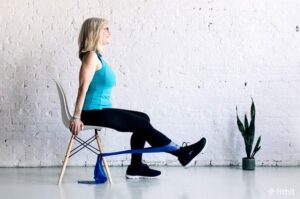Recovering from surgical repair of anterior cruciate ligament is a long and complex process requiring extensive time on the sidelines and commitment to strict recovery protocols. Among these protocols, are specific strength requirements which physiotherapist, sports scientists and other assistive roles use to gauge athlete’s progress through their rehabilitation. One important tool to assess rehab timeline progression is measuring strength of the quadriceps muscles, and making sure the injured limb is recovering strength levels which were previously lost due to injury and the surgery.
Professionals use a limb symmetry index (LSI) to quantify unilateral muscle strength and make sure the injured side is matching the uninjured limb in terms of muscle strength, power, and stability. Athletes should aim for >90% strength value between injured and uninjured legs before progressing to the next stages of rehab. Various tests are employed to ensure that athletes are hitting these checkpoints and are keeping on track. Tests include maximum single leg squats, hop for distance, linear triple hop and crossover triple hop just to name a few. Although these tests can provide health professionals an insight to the athletes’ limb symmetries, there are ways that athletes can compensate for underlying quadriceps weakness. These being increasing hip flexion (using glutes and hamstrings more) during Single Leg Squat exercises and arm swing during SL plyometric variations.
An exercise which solves this issue and isolates quadriceps loading is the knee extension. Knee extension provide optimal stimulus for hypertrophic, and strength gains reasonably early within the rehabilitation process. From 12-weeks onwards knee extension completed with full range of motion and gradually progressing in load should a staple for strength training routines. There has been evidence to support that the amount of tension on the graft during knee extensions is comparable to that of standard gait with limited risk of strain so long as loads are sensible.
Including knee extensions into traditionally employed restrengthening programs have been shown to increase quadriceps strength compared to normal. Athletes that performed knee extension in conjunction with other exercises were able to accelerate their return to sports by 2 months, and return to their strength performance to pre injury levels far sooner.
Long considered ‘not functional’ for athletes and almost a taboo exercise to think about including in rehabilitation programs, the knee extension provides significant advantages for regaining single leg strength. By eliminating compensatory patterns commonly observed during other single leg exercises, physiotherapists are able to clear athletes with more confidence, knowing they are at a significantly reduced risk of reinjury.




